Rue Gambetta / Église St. Porchaire
Rue Gambetta / Église St. Porchaire
Auteur inconnu
FRA
Poitiers
Télécharge images...
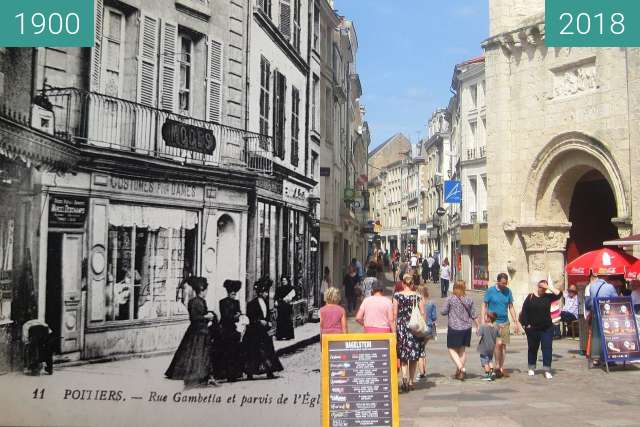
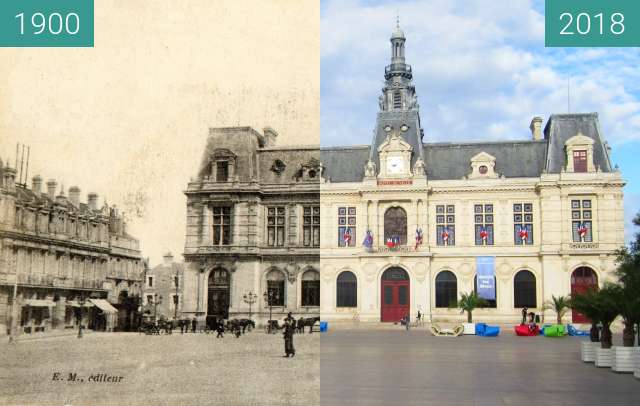
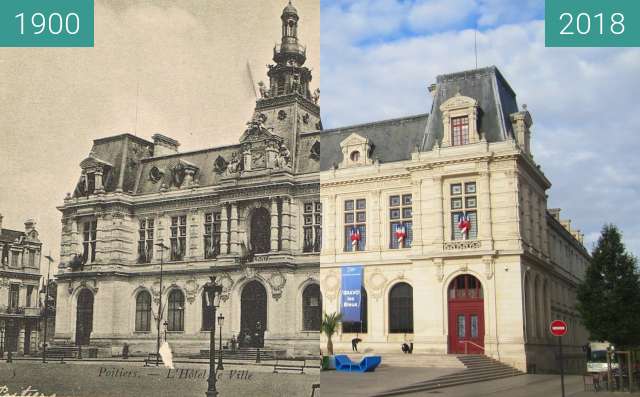
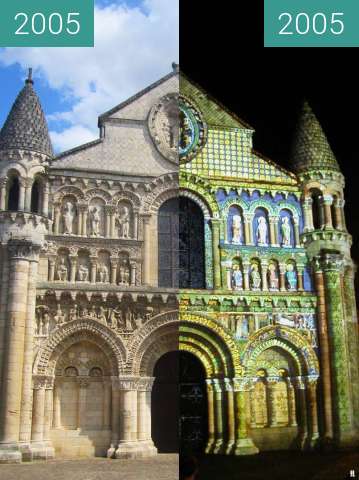
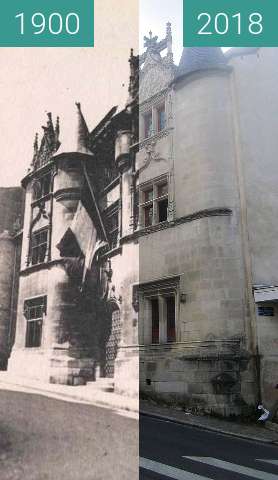
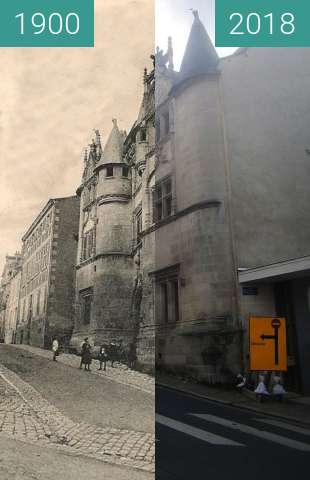
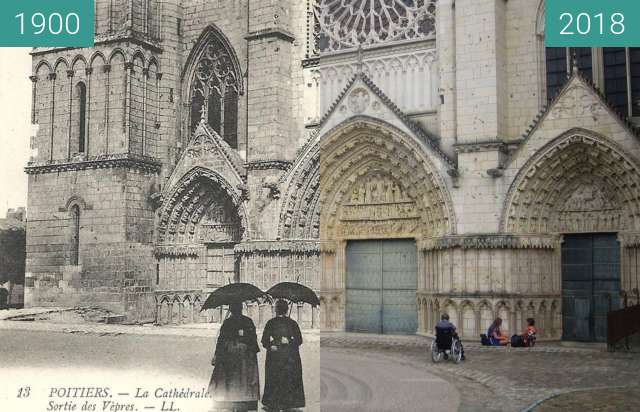
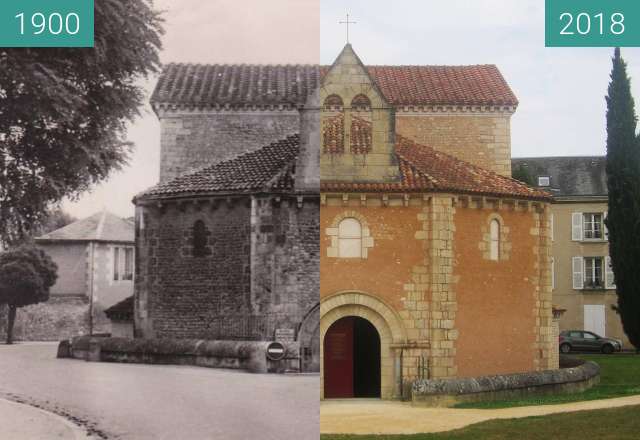
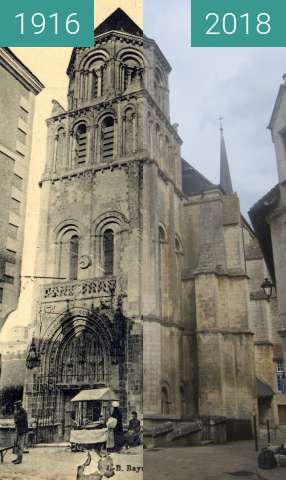

The Rue Gambetta with the church of Saint-Porchaire in Poitiers, around 1900 and today. At that time, in the houses next to the church were shops for sporting goods, leather goods and photography; today candy shops.
The church dates to the end of the 9th century, of which only the western building is preserved, which extends over three floors with windows and arcades. Above the entrance rises a round arch resting on Romanesque capitals. With its Romanesque gate tower from the 11th Century, the church towers high out of the pedestrian area.
La rue Gambetta avec l'église Saint-Porchaire à Poitiers, vers 1900 et aujourd'hui. A cette époque, dans les maisons voisines de l'église, se trouvaient des magasins d'articles de sport, de maroquinerie et de photographie. aujourd'hui les magasins de bonbons.
L'église date de la fin du IXe siècle. On ne conserve que le bâtiment occidental, qui s'étend sur trois étages avec des fenêtres et des arcades. Au-dessus de l'entrée se dresse une arche ronde reposant sur des chapiteaux romans. Avec sa tour de porte romane du 11ème siècle, l'église domine la zone piétonne.